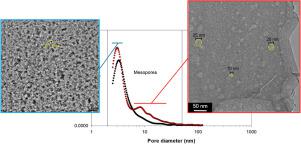International Journal of Coal Geology ( IF 5.6 ) Pub Date : 2021-11-02 , DOI: 10.1016/j.coal.2021.103880 Claudio Delle Piane 1 , Humera Ansari 2 , Zhongsheng Li 3 , Jitendra Mata 4 , William Rickard 5 , Ronny Pini 2 , David N. Dewhurst 1 , Neil Sherwood 3

|
The upper Ordovician Wufeng Shale and lower Silurian Longmaxi Shale are part of the Fuling shale gas play located in the south-eastern part of the Sichuan Basin, southern China, representing the first commercial shale gas production project outside North America. We studied the occurrence of porosity at the micro- and nano-scale in samples of contrasting organic richness representing the typical lithofacies from the post-mature part of the Wufeng-Longmaxi gas play. Using a combination of site specific, high-resolution scanning and transmission electron microscopy with bulk measurements based on small angle neutron scattering and cryogenic Argon physisorption, along with conventional organic petrology, we highlight the impact of different types of organic matter (OM) (primary versus secondary) on the development of OM-hosted porosity. The results indicate that at the bulk scale the overall porosity in the samples is proportional to their organic content and organic hosted pore account for 30–40% of the total pore volume of the rocks. Nevertheless, most of the pores identified via electron microscopy imaging seem to reside in the organic matter, indicating that potentially a large part of the pores volume detected by neutron scattering and Argon physisorption is visually not detected. Organic matter focused nanoscale imaging revealed that mesopores are preferentially present in the solid bitumen and not in the primary detrital organic particles. Organic lean samples show low porosity and dominance of micropores, while organic-rich samples show higher porosity and a broader spectrum of pore sizes. Importantly, most of the meso pores are located in organic matter petrographically interpreted as solid bitumen, while detrital organic particles like graptolites show minimal visible porosity under high resolution electron microscopy and pore sizes in the micro pore range (i.e. <2 nm).
Distinguishing between primary and secondary OM is therefore important for understanding the creation of an interconnected network of porous OM during hydrocarbon migration. This may have an important control on the estimation of gas in place and the gas transport properties of the shale.











































 京公网安备 11010802027423号
京公网安备 11010802027423号